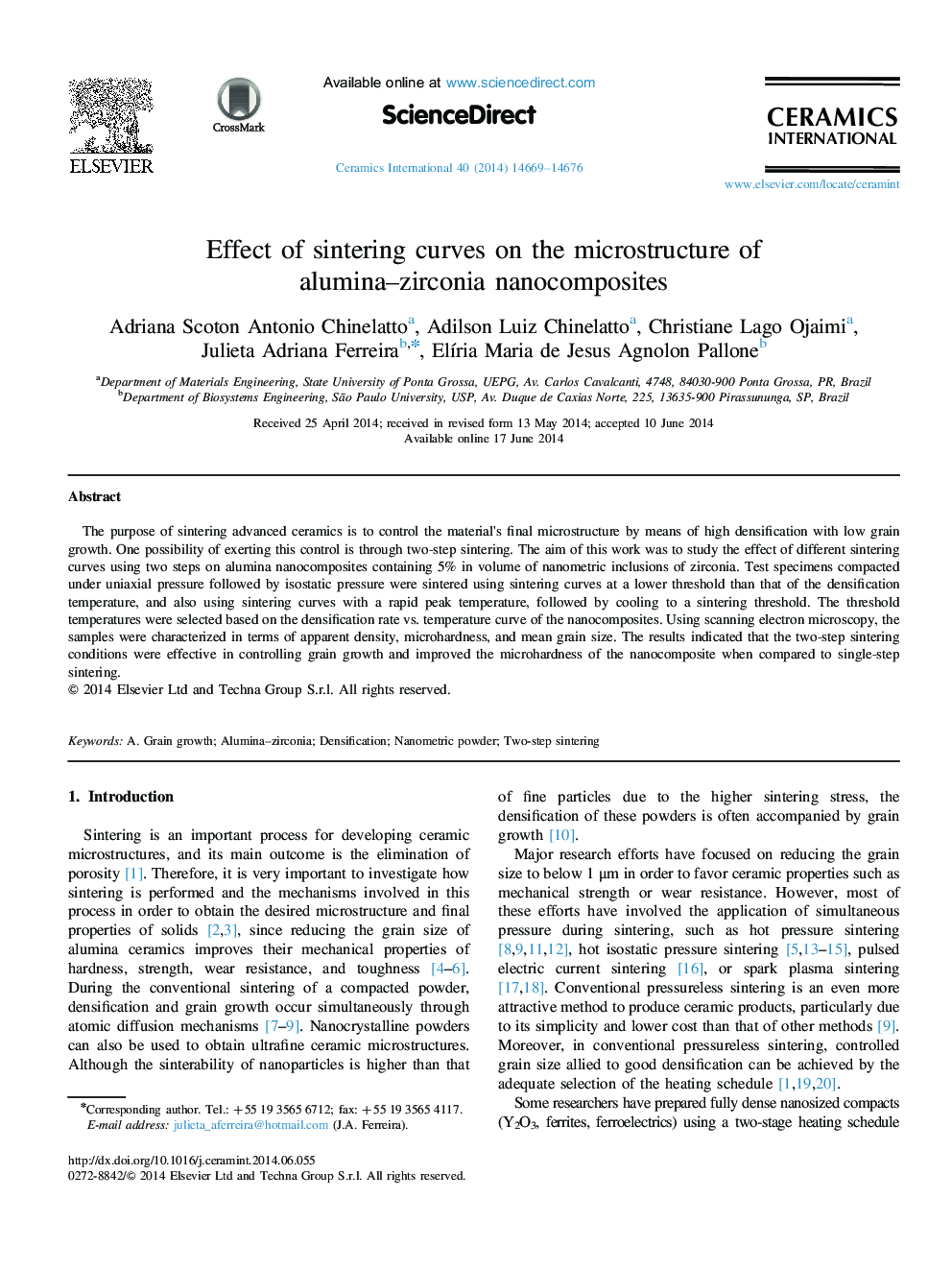| Article ID | Journal | Published Year | Pages | File Type |
|---|---|---|---|---|
| 1461206 | Ceramics International | 2014 | 8 Pages |
The purpose of sintering advanced ceramics is to control the material׳s final microstructure by means of high densification with low grain growth. One possibility of exerting this control is through two-step sintering. The aim of this work was to study the effect of different sintering curves using two steps on alumina nanocomposites containing 5% in volume of nanometric inclusions of zirconia. Test specimens compacted under uniaxial pressure followed by isostatic pressure were sintered using sintering curves at a lower threshold than that of the densification temperature, and also using sintering curves with a rapid peak temperature, followed by cooling to a sintering threshold. The threshold temperatures were selected based on the densification rate vs. temperature curve of the nanocomposites. Using scanning electron microscopy, the samples were characterized in terms of apparent density, microhardness, and mean grain size. The results indicated that the two-step sintering conditions were effective in controlling grain growth and improved the microhardness of the nanocomposite when compared to single-step sintering.
